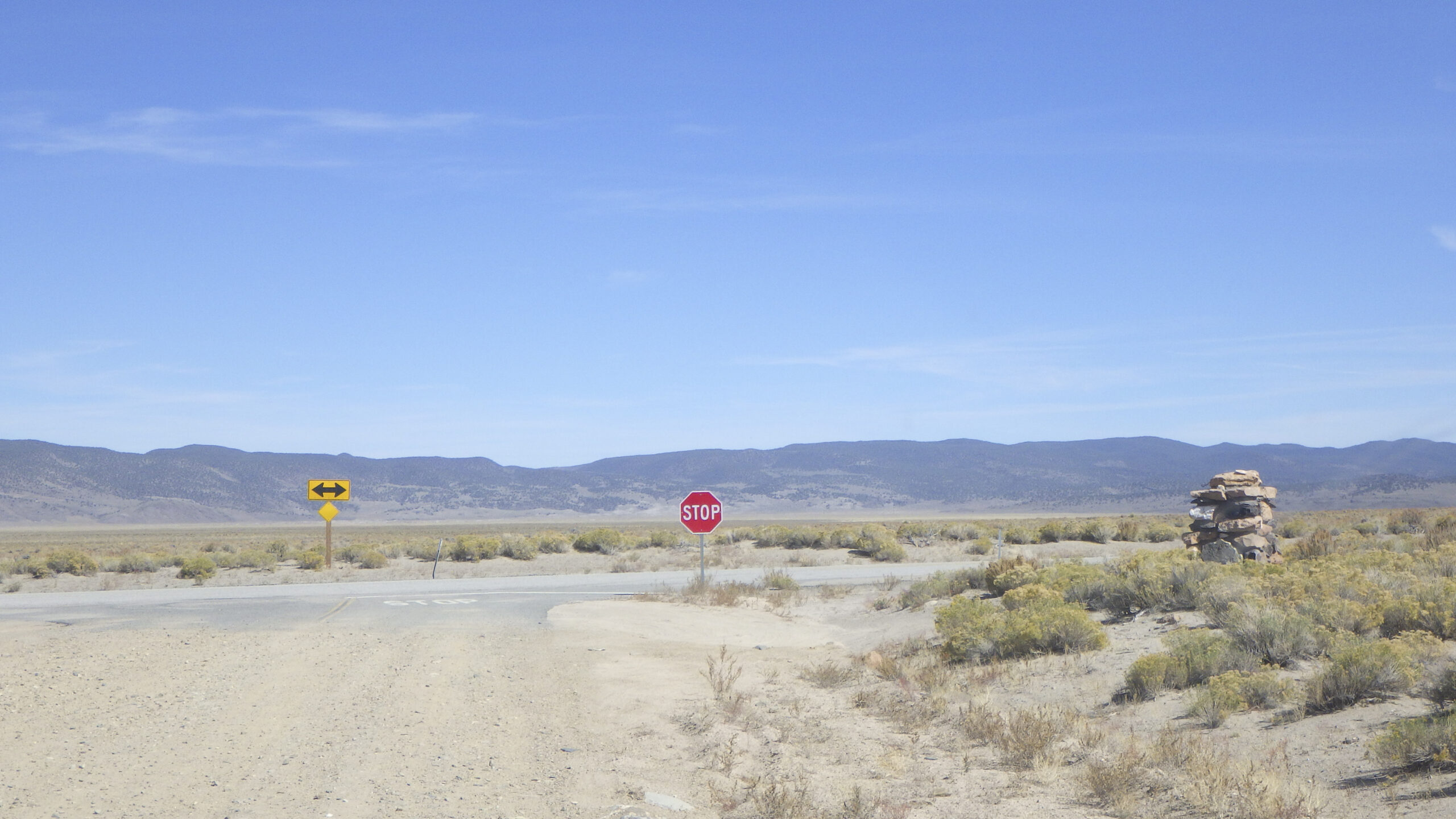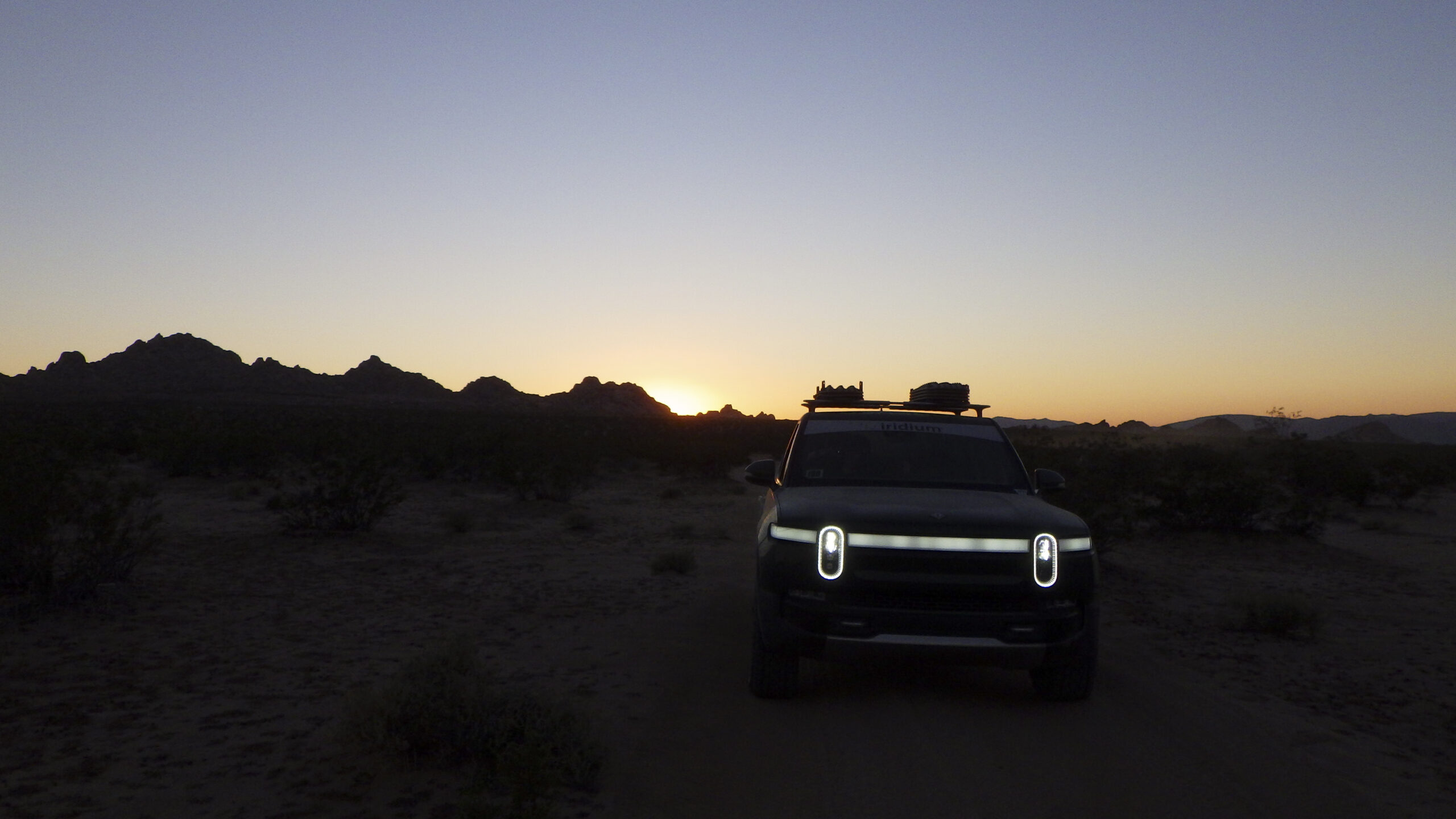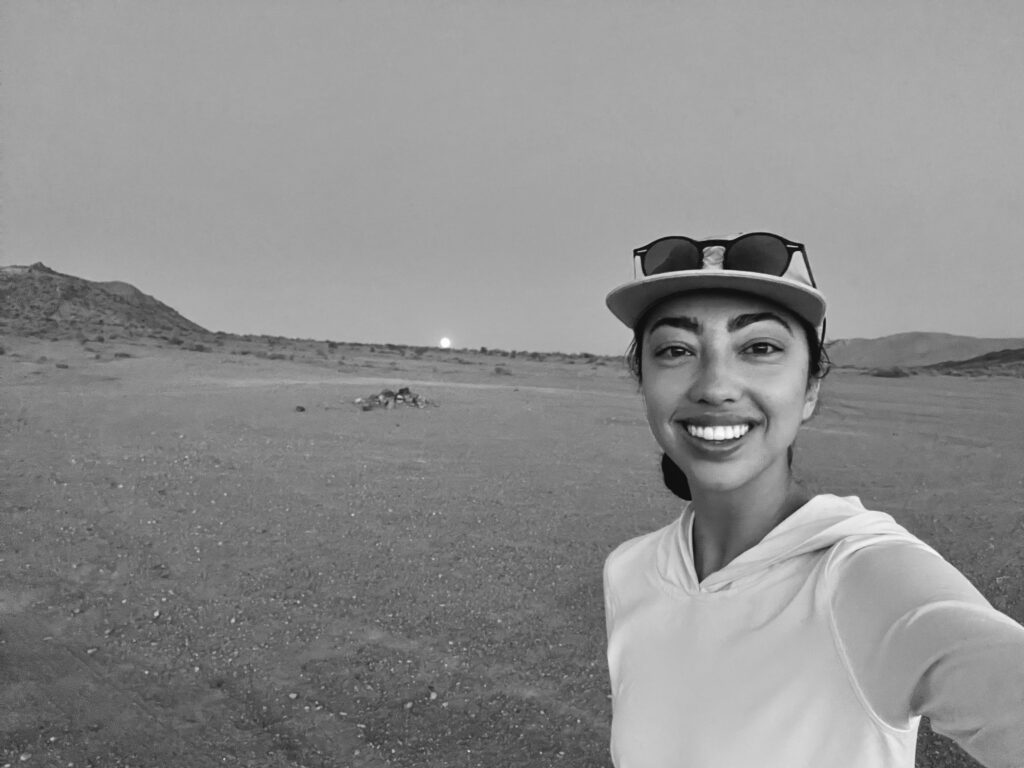The end of the year predictably brings existential contemplation, Spotify Wrapped and Instagram Reels with tiny flashes of the last 12 months. I set out to make one such Reel, scrolling through photos of vintage clothing try-ons, Polaroid scans and mirror selfies with my boyfriend. A few flicks in, I reached videos from the finish line of the longest off-road rally in North America.
Oh yeah, I did that this year.
Driving in an off-road rally wasn’t originally on my 2023 bingo card. This wild square materialized when Rivian, electric vehicle manufacturer and my full-time employer, said ‘Who amongst our employees can pilot an R1T in an intense, multi-day off-road competition?’
Rebelle Rally challenges teams of two — driver and navigator — to traverse 1,500+ miles of California/Nevada desert with just a map and compass.
By the way, the rally is only open to women.
Founder Emily Miller, a well decorated racer and driving coach, created the Rebelle Rally in 2016 as a world-class competition and a platform for women to shine. Her and her team’s intentional, no-nonsense approach to life translates to a visually stunning, technically intense rally course that requires all the grit you can muster. No phones or GPS are allowed. And no pit crews or chase trucks, either — you break it, you fix it on the trail, unless you take a penalty for on course assistance from a neutral rally mechanic. Each vehicle was tracked remotely by scoring officials, safety teams and even our loved ones, who could watch our tiny dots move across the course each day.
This was Rivian’s fourth year competing and our second year entering teams of full-time employees. All vehicles are street legal and stock, or close to it. Our Forest Green R1T is the same truck any Rivian owner has in their garage or driveway, save for a few cosmetic ‘upfits’ that made space for our gear to be stored securely. The 8-day challenge is grueling. Mornings start at 4:30 AM. As an ‘electrified’ EV team, our close time shifted to account for midday charging, putting us back at camp around sunset. It’s Type II fun, as the Washington Post would call it — “often uncomfortable but in ways that also make you feel alive.”
After submitting my interest, surviving eight months of training, late nights behind the wheel, early mornings with a map, matching with a partner and a long bout of poison oak after recovering vehicles from a cliffside, we pulled up to the starting line in our electric truck.

We traversed the most beautiful, intense trails, with exhilarating highs and excruciating lows: rolled into a charging stop with just 4% battery (I cried when Larry, our trusty Renewable Innovations partner, plugged the truck in); scarfed down an unknowable amount of beef jerky; drove alongside professional drivers, multi-time champions and seasoned four wheelers; thankfully experienced zero mechanical issues or tire failures.

Two months after finishing in the top third of the competition in our ‘rookie’ year, I think driving in the Rebelle is my hardest-won and most impactful accomplishment yet. I learned more about myself that week than I have in hours of intensive therapy.
In training, I often lay awake at night fretting over what the next day might bring and what the rally might actually be like. But, once we crawled into our tent at the end of each day on the course, my mind was calm. There was nothing left to prepare for.

I finally realized why I love physically demanding tasks: presence and mental clarity. When you’re driving over sharp rocks 15 kilometers into a 23 kilometer one-way trail, every steering adjustment counts. There is no room for distraction when you’re driving a ~7,000 pound vehicle over the crest of a sand dune.

On the last day of competition, we had a very short window to reach a critical checkpoint. I thought about calling it and finishing early. With my partner’s encouragement, we high-tailed it over 20 kilometers (12+ miles) in deep, hot sand and made it to the spot with less than two minutes to close. Thinking we had timed out already, the safety team pulled the flag before we arrived. We clicked in after a short exchange with Jimmy Lewis, legendary motorcycle racer and Course Director, who appeared out of the sand to check that we had the right time.
The course was quiet on the long drive back, and we picked up our final checkpoints without seeing any other competitors. With the sun disappearing to the west, we were the last team to cross the finish line. That day I rediscovered the power of pushing through and the beauty of being right on time.

But somehow, I keep forgetting it even happened.
It’s easier to forget than you’d think. Three days after crossing the finish line, driving back to LA, cleaning and unloading gear, and attending a ‘welcome back’ happy hour at the office, I opened my laptop again. Normal life came flooding back.
By the following week, I was in a very intense escrow on my dream fixer-upper/first home. Inspections and construction and land use filled what little free RAM my brain had left.
The truth is, I didn’t give myself intentional processing time. It didn’t occur to me that I’d need it. ‘Taking a break’ isn’t a phrase in my personal dialect, let alone the vernacular of most women. We are constantly overloading ourselves with tasks, commitments, responsibilities, goals and dreams.
But what’s that haunting feeling after we achieve something great, yet the world keeps humming along?
It’s not exactly Gold Medal Syndrome, which Olympians may face after reaching the pinnacle of their athletic careers. For me, John Florio and Ouisie Shapiro of The Atlantic described it better: “A feeling that life suddenly seems ordinary.”
No more 4:00 AM alarms, no more tire-changing practice, no more frantic bathroom breaks because literally every minute counted. In training, our coaches stressed that navigators get teams lost, but drivers get teams hurt, or worse. I took that responsibility so seriously that I bought my teammate Rachel an air horn in case she lost sight of the truck when scouting a trail or sighting her compass.
All of this fell away when we dropped the truck off. In the vacuum of competition came ‘the ordinary.’ And I didn’t make a concerted effort to keep it at bay so I could really savor the fleeting extraordinary.
Now that a few months have passed, I’ve taken time to reflect on the experience and consider what I could have done differently.
There’s a whole array of accomplishments that merit processing time – finishing a big project, setting a boundary, having a hard conversation, making good on a promise to yourself.
You could scroll back in your Camera Roll, think about what you’ve done recently and what 2024 will bring. Here’s how you might set yourself up to get the most out of those impending milestones:
Make space for self-reflection.
This one is obvious, but hard-won. If your calendar is notoriously full, add a dedicated time block for quiet time and ask yourself:
What did [this accomplishment] bring into my life?
How did this push me?
From this experience, what do I want to keep and let go of?
Give yourself breathing room.
In writing this piece, I was tempted to make ‘find the next big thing’ the second step, but after stumbling on the term ‘over-functioning,’ which describes people who are “doing more than is necessary, more than is appropriate and more than is healthy,” I’m rethinking whether ‘more’ is the answer.
As potential ‘over-functioners,’ the last thing you or I need is something else to sap our focus and strength, even if it’s what we reflexively turn to for meaning. Giving ourselves a bit of breathing room doesn’t diminish our strength. Instead, it helps fuel our resilience when we need it most.
Find something new — eventually.
When you’re ready (really actually) for something new, it will come.
The dream fixer-upper didn’t work out, and I’m still looking for somewhere to nest. In between family, my relationship, friends, work, my photography practice and home browsing, I’m still making time to get off-road.
While I have several Google Chrome tabs open ranging from ‘an introduction to natural home building’ to ‘intermediate winching,’ I’m trying to give myself a buffer to just be.
That’s why I don’t have an exact vision for my 2024 year-end Reel. Some teams are already prepping for Rebelle Rally 2024, but that 4:30 AM wakeup feels a long way away. We’ll see what makes the camera roll cut this time, so I can think to my 2025 self,
“Oh yeah, I did that this year!”

Kelly Kennedy freezes moments in time so you can revisit them. Her photography practice includes desert landscapes, stillness in everyday life and self-portraiture. In addition to photography, she is also an editorial and commercial model whose clients include Walmart, National Geographic, Hammit LA and FUTURE LYNN. Her 9-5 focuses on corporate communications. She recently moved back to Southern California from New York City. When she’s not behind or in front of the camera, she’s probably in a 4×4 in the desert.
All photos in this essay are also by Kelly Kennedy.




